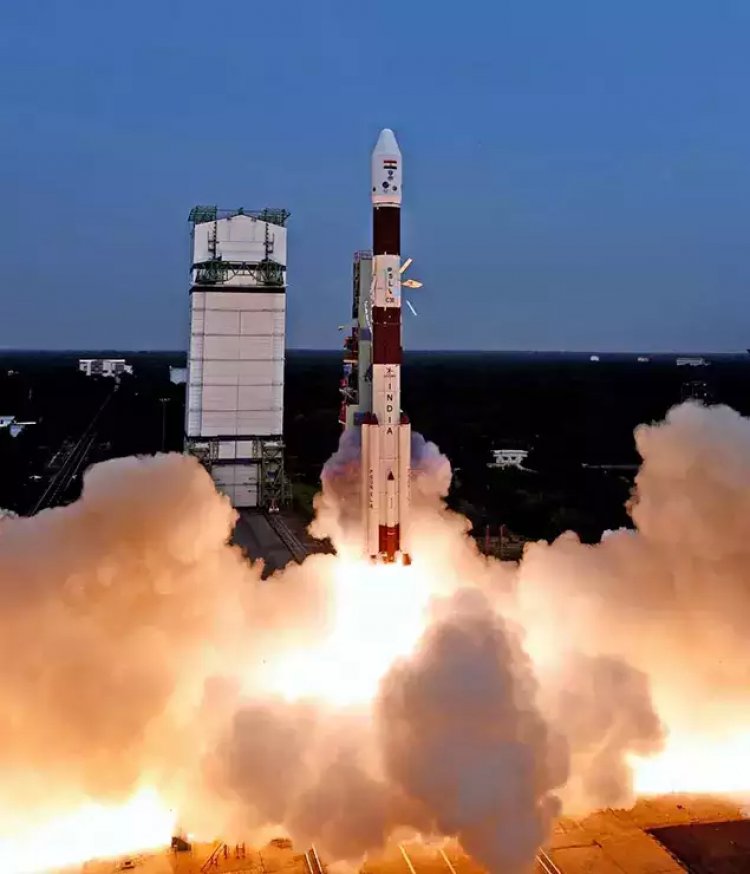Space: Private Sector is in The Game of Launches and Satellites
Asia News Agency

India's first privately made rocket lifted off from ISRO's spaceport in Sriharikota Friday, marking the private sector's maiden foray into space.
Developed by four-year-old Hyderabad-based startup Skyroot Aerospace, the launch of Vikram-S, is the first launch after the space segment was thrown open to private players in 2020.
The 6-metre tall rocket, launched from Satish Dhawan Space Centre, reached peak altitude of 89.5 km before beginning its decent. It is one of the world's first few all-composite rockets that has 3-D printed solid thrusters for spin stability of the launch vehicle, a Skyroot functionary said.
Mission 'Prarambh' (the beginning): The Mission titled 'Prarambh' (the beginning) is carrying three payloads belonging to two domestic customers and a foreign client.
The launch of the rocket is expected to demonstrate flight proving of avionics systems in Vikram series like telemetry, tracking, inertial measurement, Global Positioning System, on-board camera, data acquisition and power systems.
The 545 kg Vikram launch vehicle consists of the Vikram II and Vikram III series.
The Vikram-S launch vehicle is expected to place the payloads in about 500 kms low inclination orbit.
The technology architecture of the launch vehicle Vikram offers unique capabilities like multi-orbit insertion, interplanetary missions, while providing customised, dedicated and ride share options covering a wide spectrum of small satellite customer needs, the company said.
So far, privately-built satellites have been launched using rockets of the Indian Space Research Organisation (ISRO). Now, for the first time, the private sector is in the game. ‘Vikram-S’ has been designed, developed and fabricated at Skyroot Aerospace in Hyderabad. "The sub-orbital flight of ‘Vikram-S’ is a developmental mission designed to validate launch-vehicle technologies and prepare for a commercial launch the next year,” writes Dinesh C Sharma (Science Commentator).
About Skyroot: Skyroot is a startup founded barely five years ago by Pawan Chandana (alumnus of IIT-Kharagpur) and Bharath Daka, a graduate from IIT, Madras, who had worked for some time with the ISRO. Within four years, the company could develop a liquid-propulsion engine, a 3D printed cryogenic engine and a solid rocket stage. The plan is to develop a series of modular launch vehicles suited for launching small satellites. Skyroot says it wants to make satellite launches as quick, precise and affordable as booking a cab through a mobile app. There can be ride-share options too, to accommodate several customers in one launch.
The private space industry in India, writes Sharma “is bubbling with activity, with the national space agency handholding private efforts. Another startup, Agnikul Cosmos based in Chennai, is also developing a launch vehicle — ‘Agnibaan’ — and hopes to test-flight it before the year ends. For this, the ISRO recently provided the company with a critical subsystem, the flight termination system which it has been using for its launch vehicles. Agnikul recently tested its semi-cryogenic engine ‘Agnilet’ at the Thumba Equatorial Rocket Launching Station in Thiruvananthapuram. In Bengaluru, Bellatrix incubated at the Indian Institute of Science is fast-expanding its engine development activities. It is engaged in the development of propulsion systems. The company has already come up with mono-propellant thrusters, green propellants and electric thrusters, and is collaborating with the state government to establish a space factory in Bengaluru to make electric propulsion systems and orbital transfer vehicles.”
Technology transfer: All these developments “is the culmination of technological and industrial capabilities, carefully built over decades, both within the ISRO and outside it……Each ISRO centre had a set of industries with which it worked. Technology was transferred to small and medium enterprises for production. For instance, the ISRO Satellite Centre, which develops satellites, worked with some 30 public and private sector organisations. The Vikram Sarabhai Space Centre, which develops rockets, worked with 45 industries in the 1970s. The relationship with the industry was not just that of vendor-supplier, but the ISRO worked with the private industry to develop the industrial infrastructure necessary for space requirements. It established in-house facilities only in critical areas and where external capability could not be developed.”
Scientists as entrepreneurs: Along with technology transfer, Sharma points out the “ISRO also encouraged scientists who wanted to become entrepreneurs and act as vendors for it….
Engagement with the industry: “As a result of sustained engagement with the industry over the decades and aggressive technology transfer, the private sector developed expertise and capability in subsystems, components, electronics, etc. This also resulted in the availability of a pool of experienced manpower in the private industry, research laboratories and academic institutions such as IITs. These two critical inputs — an industrial base and availability of technical manpower — coupled with access to funding through venture capital route are driving space startups….”
















